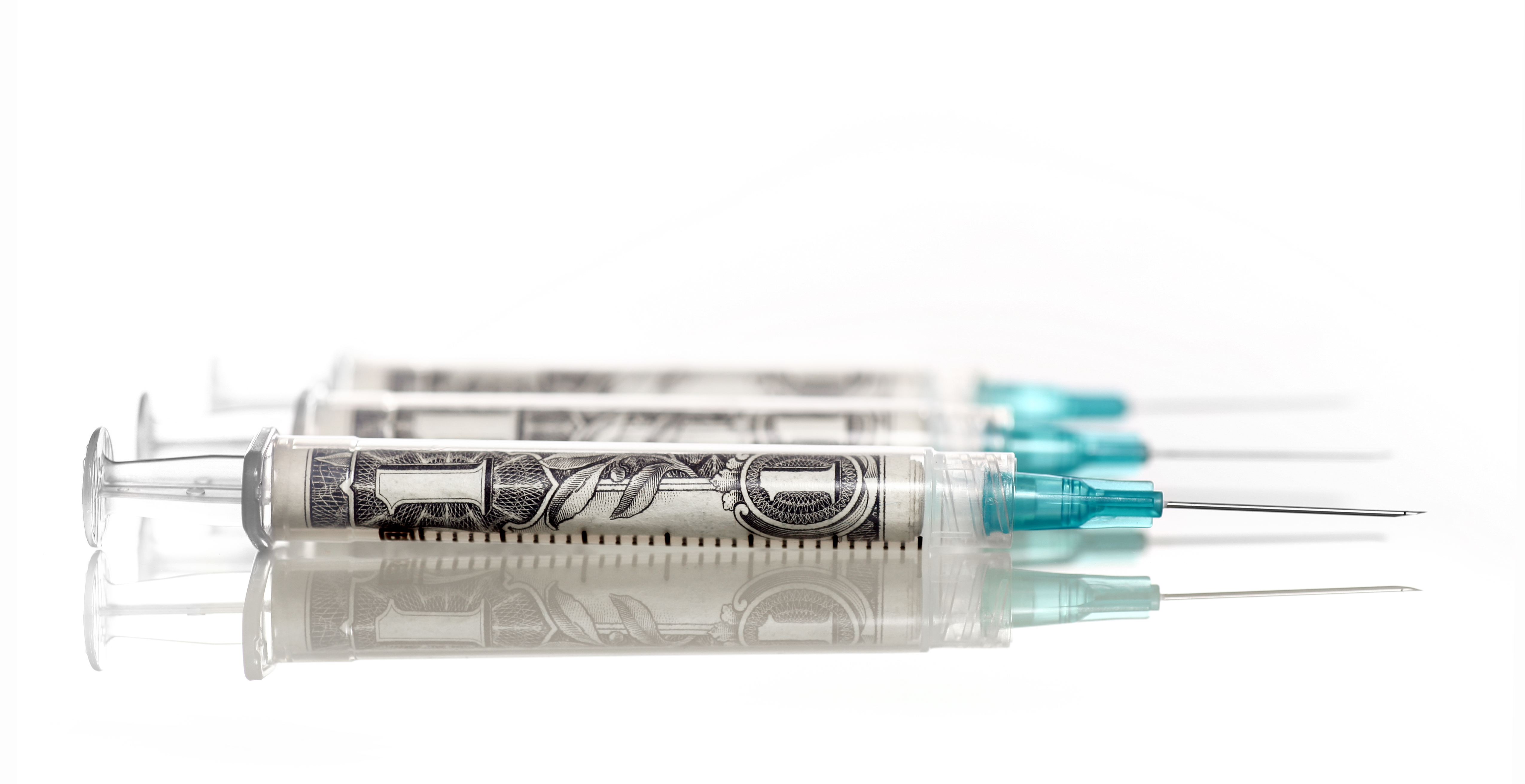“I am disposed to ask: “Does teaching consist in putting questions?” Indeed, the secret of your system has just this instant dawned upon me.”
The COVID-19 pandemic has transformed longstanding debates about the role of the public and private sectors in drug discovery and development from questions of optimal policy to questions of life and death. On one hand, it has dramatically demonstrated the public’s dependence on biopharmaceutical companies for the discovery, development, manufacture, and distribution of drugs and vaccines that may quell the pandemic. On the other hand, the billions of dollars of public funding demanded by the private sector to pursue these products vividly illustrates the industry’s reliance on public funding for the development of products that address the public’s most pressing needs.
The escalating controversies and divisive commentaries over drug pricing and the prioritization of products that benefit from federal funding also highlight deep divides between the precepts of the public and private sectors concerning the mission of the corporation as well as the role of government in value creation and markets. These conflicts also highlight the lack of coherent policies designed to maximize the public return on taxpayer investments and ensure that the public’s needs are met.
Part of the problem is that the dialogue around drug discovery and development is dominated by studies of private sector investment in the biopharmaceutical industry, the economics of the industry, and the efficiency of the penultimate stages of clinical development, regulatory review, marketing, and sales. Less is known about the public sector’s investment in drug discovery or development, or the role of government in promoting new drugs for treating or preventing disease.
With support from the Institute for New Economic Thinking, we have recently completed a Working Paper examining the public sector investments by the National Institutes of Health (NIH) that contributed to the new drugs approved by the FDA in the decade 2010-2019. This work, which builds on an earlier study of drugs approved in the first part of the decade, provides a rich dataset describing the role played by the government in promoting new drug discovery and development.
The scope of the public sector’s contribution to drug discovery and development identified in is study is somewhat overwhelming. Our analysis focused on identifying HIN funded research associated with the 356 drugs that were approved from 2010-2019 or their 219 distinct biological targets. We also examined the timelines of clinical development, proxy measures of their innovativeness or importance, and the patents resulting from the NIH-funded research. We identified 2.2 million published research papers related to these drugs or targets, of which 21% acknowledged funding from the NIH totaling 332 thousand fiscal years of research funding amassing more than $230 billion. This research was also cited in 22 thousand issued US patents.
What does this research teach us about the role of the public sector’s investment in drug discovery and development? Like the Socratic method, this analysis may be more informative from the questions is poses, rather than the answers it provides. Here are some of the questions.
What are the goals of NIH investments in drug discovery and development?
While the stated mission of the NIH is “to seek fundamental knowledge about the nature and behavior of living systems and the application of that knowledge to enhance health, lengthen life, and reduce illness and disability,” our analysis identified relatively little direct investment in drug development. We identified 244 thousand publications directly related to these drugs, of which 16% acknowledged NIH funding totaling $36 billion. In contrast, we identified 2 million publications related to the biological targets for these drugs, of which 21% acknowledged NIH funding totaling $195 billion. Two thirds of the research funding we identified was for investigator-initiated Research Projects or Research Program Projects and Centers that provide research infrastructure, and less than one third was related to government-initiated and managed Cooperative Agreements of Intramural Research.
This pattern of funding is consistent with the linear model of innovation that underlies federal science policy. In this model, there is a flow of fundamental knowledge from publicly funded, basic science, sometimes referred to as “scientific capital,” to private industry, which provides the economic capital investments and technical capabilities required for drug development, manufacture, and marketing. In our study, we found that every one of the new drugs approved from 2010-2019 was developed and distributed by companies, which are estimated to invest as much as $1.5 billion on average in each new product launched.
There are, however, other goals inherent in federal funding, which are not stated in the NIH mission statement, but rather the Bayh-Dole Act, which governs the transfer of which NIH-funded research from non-profit institutions that receive NIH funding to industry. The stated objectives of the Bayh-Dole Act (35 U.S.C. §200 – 212) include “to promote the utilization of inventions arising from federally supported research or development; ….. ; to ensure that inventions made by nonprofit organizations and small business firms are used in a manner to promote free competition and enterprise; to promote the commercialization and public availability of inventions made in the United States by United States industry and labor; to ensure that the Government obtains sufficient rights in federally supported inventions to meet the needs of the Government and protect the public against nonuse or unreasonable use of Inventions…”.
Are the goals of federal funding achieved?
There was a steady increase in the number of new drugs approved through the decade 2010-2019, and we identified NIH funding for research associated with every one of these drugs or their biological targets. Forty-one percent of these products were categorized as being “first in class,” meaning that they were associated with a novel biological target or mechanism that was uncovered by basic research. In this context, NIH funding is associated with a robust pipeline of new drugs.
Our analysis also suggests that the NIH is remarkably efficient at funding research that is utilized in the discovery or development of new drugs, commercialized, and publicly available. The $230 billion in NIH funding (2000-2019) that was directly or indirectly related to these drugs represents 40% of NIH budget allocations over this period. Furthermore, the NIH has a stated strategy of dedicating half of its research budget to basic research, and the $195 billion in NIH funding that was characterized as basic research in our study, represents more than 65% of this total.
Our study does not, however, address the question of whether the NIH achieved its broader goal to “enhance health, lengthen life, and reduce illness and disability.” Historically, new drugs are important drivers of improved health outcomes and longevity. Previous research has shown that new drugs approved from 1990-2009 contributed to an increase in longevity of 1.27 years by 2009, representing 70% of the total increase in longevity over that period. Nor did our work address the question of whether these government investments achieved the goals of promoting enterprise as well as “United States industry and labor.”
Indicators suggest that the biopharmaceutical industry, which is largely enabled by government investments in basic research, is thriving. From 2000-2019, U.S. spending on pharmaceuticals increased from $253 to $345 billion. Research on drug expenditures from 1996-2013 shows that this increase was driven primarily by increased utilization of drugs (6.7% annual growth), consistent with an increase in the number of new drug approvals and the emergence of drugs for previously untreatable conditions. Increased spending on pharmaceuticals, however, also reflects increases in drug costs (3.9% annual growth) and population growth (3.1% annual growth), which have little to do with pharmaceutical innovation.
The increase in pharmaceutical sales has also generated enormous profits for the pharmaceutical industry. In another study, we recently showed that from 2000 to 2018, 35 large pharmaceutical companies had cumulative revenue of $11.5 trillion and net income (earnings) of $1.9 trillion. Moreover, that study also showed that large pharmaceutical companies had median net income margins of 13.8%, significantly greater than those of other large corporations in the S&P 500 (7.7%) and similar to those of other research-driven companies.
Are NIH investments in biomedical science creating public value?
There can be no question that NIH investments in basic biomedical science are creating value in the form of new medicines for treating disease and economic activity. It is less clear that the final goal of the Bayh-Dole Act is being achieved, namely whether “the Government obtains sufficient rights in federally supported inventions to meet the needs of the Government and protect the public against nonuse or unreasonable use of Inventions…” We have several concerns.
Our first concern is whether the patents that result from NIH-funded research and structure of the Bayh-Dole Act are sufficient to achieve these goals. While we identified 22 thousand issued patents resulting from research that was directly or indirectly related to drugs approved from 2010-2019, only 567 of these patents were listed in Orange Book as contributing to the marketing exclusivity of approved products, and only 27 of the 311 study drugs included in this database[1] were protected by these patents. (Some of these patents are related to drugs approved prior to 2010.) Thus, inasmuch as the measurable economic “value” of the patents relates to its ability to provide marketing exclusivity, which provides greater revenue and profit for the patent holder, only a very small number of patents would be deemed to be contributing to economic value. A similar problem arises in accounting. Patents that are only indirectly related to new drugs represent “intangible assets” rather than “tangible assets,” and, thus, do not contribute to the calculated value of the corporation or its shareholders.
The problem is compounded by the fact that basic research may not lead to disclosure of a “subject invention,” which is the trigger for application of the Bayh-Dole Act. A “subject invention” is defined in the Act as “any invention of a contractor conceived or first actually reduced to practice in the performance of work under a funding agreement.” An “invention”, however, requires the researcher to recognize a functional purpose or usefulness of the invention and provide information sufficient for those “skilled in the art to reduce it to practice without the exercise of extensive experimentation or the exercise of inventive skill.” Basic research, which is defined by the National Science Foundation as being undertaken “without any particular application or use in view,” may not meet this utility requirement. Furthermore, since the translation of basic scientific discoveries into successful products often requires extensive investments of time, talent, and capital, the fruits of basic research may not satisfy the enablement standards.
Our concern, therefore, is that the Bayh-Dole Act may not even apply to most of the research being funded by the NIH. Without engaging in legal interpretations of the government’s March-in-Rights associated with the Bayh-Dole Act and whether they can be triggered in response to high drug prices or limited availability of a drug, if the patents resulting from NIH funding are not material to a company’s exclusivity, then triggering March-in-Rights to these patents may not have any effect on the company’s exclusive rights exclusive rights to market a product and set its price. While the needs of the government may be met by other mechanisms, such as the Defense Production Act, if the Bayh-Dole Act does not apply, there are few other mechanisms to meet the public’s need for protection against “nonuse or unreasonable use” of government funded research.
Second, we are concerned about how the financialized biopharmaceutical industry balances creation of shareholder value and the value resulting from improving health outcomes. Studies over the past decades consistently demonstrate that increasing copayments result in lower utilization of health resources and compromise health outcomes. Thus, corporations that seek to maximize shareholder value by aggressively pricing their products will necessarily reduce the health value resulting from these products. This, in turn, reduced the health impact of the NIH funding that contributed to their discovery and development.
The concept that companies have an obligation to maximize shareholder value is increasingly challenged by both the business and academic communities. There are, however, no systematic mechanisms for monitoring how companies choose to balance profits and people, either by embracing a stakeholder perspective on value maximization, creating shared value, or prioritizing social responsibility as a corporation mission.
Finally, also unclear is whether the return on investment to government, as an “investor of first resort” in the earliest stages of biopharmaceutical innovation, is commensurate with the risk of these investments. The government’s return on investment is largely indirect, and is commonly assessed by the health value created by the products (e.g. QALYs), the estimated value of the jobs created in for-profit and non-profit firms, and the economic impact of growing revenues, market capitalization, and shareholder value. Mazzucato has argued that indirect measures may be inadequate, and that more attention should be paid to assuring direct returns from the licensing of government-funded technologies to industry comparable to those of other early investors. Given the scale of the public sector investments identified in our work, there is an acute need for methods that will adequately measure these multivarious forms of value, policies that provide the public with an equitable balance of risk and reward, and a framework that equitably prioritizes alternative forms of value in response to the public’s most pressing needs. In an era of both COVID and economic uncertainly, there are hard choices to make.
[1] Note that the Orange Book includes only drugs approved by the Center for Drug Evaluation and Research at the FDA, not the Center for Biologics Evaluation and Research, and does not include biological products. Thus only 311/356 drugs in our study had entries in Orange Book.








